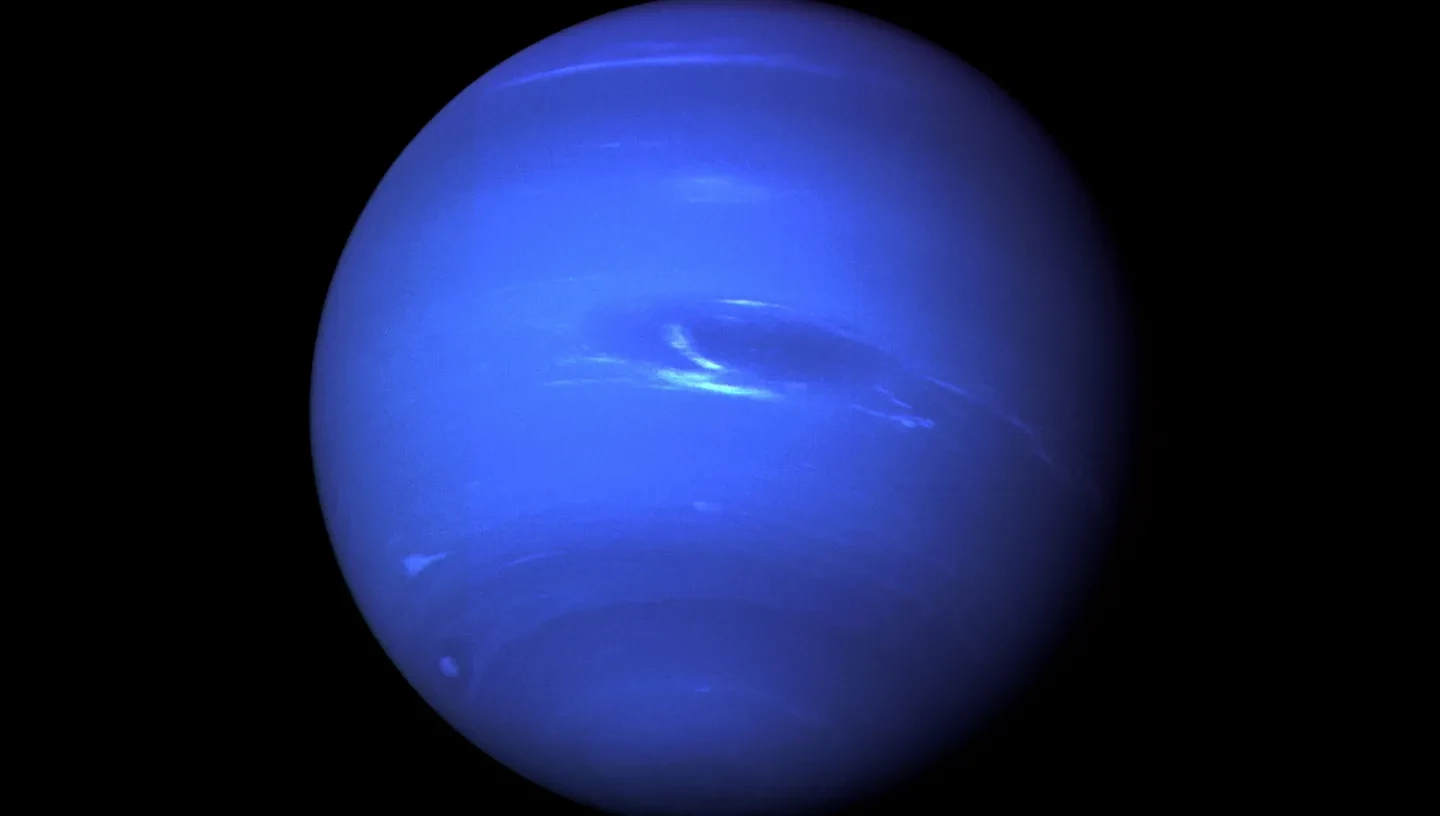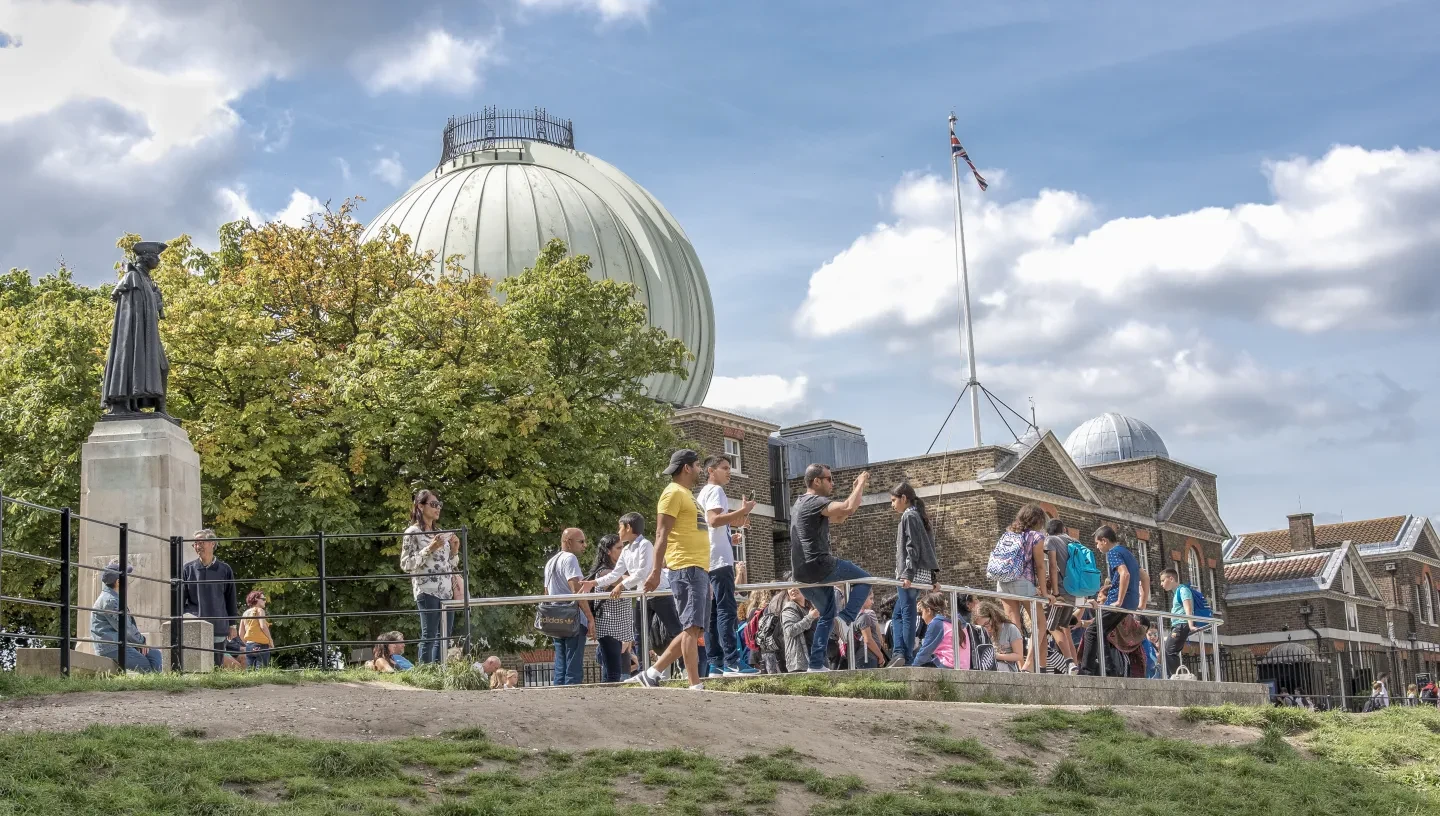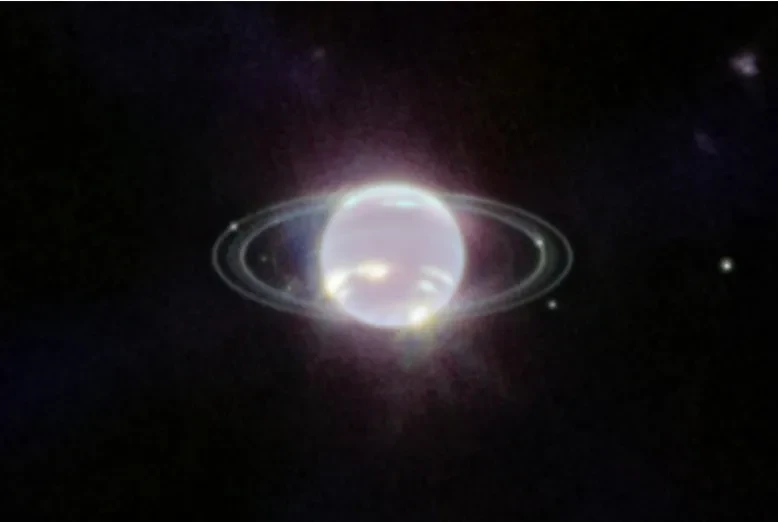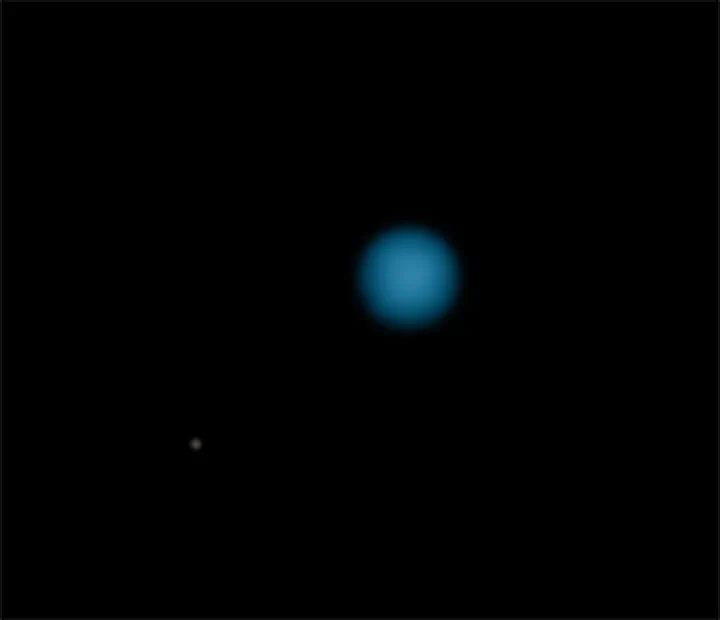
The planet Neptune is the furthest planet from the Sun and is orbited by Triton.
The planet Neptune is the eighth and furthest planet from the Sun and orbits the Sun every 165 years at a mean distance of 30 times that of the Earth. It has a diameter of 48,000 km and a mass 17 times that of the Earth.
It is a giant gaseous planet spinning around once every 19 hours. The structure of the planet is a rocky core surrounded by a jacket of ice, in turn, surrounded by an 8000 km-deep atmosphere. This atmosphere is composed mainly of molecular hydrogen with clouds of methane at -220°C.
The discovery of the planet Neptune
The story of the discovery of Neptune is an intriguing one, which is as much a story about people and their characters as it is about science.
During the 19th century observations of the positions of the planet Uranus were seen to be in disagreement with predictions. Two mathematicians, a Frenchman Urbain Leverrier and an Englishman John Couch Adams, analysed these small departures from the predicted positions assuming that they were due to the gravitational pull of another, unknown planet. Adams and Leverrier worked independently and both predicted the presence of a new planet in essentially the same place in the sky.
Leverrier had the good fortune to communicate his predictions to Galle at Berlin who searched and discovered Neptune in 1846. Adams had attempted to interest the Astronomer Royal, Airy, in his calculations but, due to a clash of personalities, Airy did not consider Adams's work important.
Initially, Leverrier was credited with the prediction and it was only some years later that Adams was given joint credit for the first predicted discovery of a new planet in the Solar System.
Voyager 2 at Neptune
Almost all of our detailed knowledge of the planet Neptune comes from the close encounter by the Voyager 2 spacecraft in 1989. The signals received on the Earth had a strength of less than 0.0000000000000001 watts and yet the pictures showed fantastic details.
The planet Neptune's atmosphere has a banded structure similar to that found on the other gas giant planets. Neptune was shown to have a very active cloud system with wind speeds of up to 2000 km/h.
Voyager pictures showed that there are at least 4 rings and many dust particles were detected in the plane of the rings. The supposed arcs were found to be brighter clumps in each complete ring.
The planet Neptune has a magnetic field, which is not aligned with the rotation axis. It is believed that this field is generated in a spherical shell near the surface of the planet. Aurorae were seen associated with this magnetic field.
Satellites
Before the Voyager encounter, the planet Neptune was known to have two satellites, Triton and Nereid with diameters of 3800 and 300 km. Voyager found six more with diameters ranging from 50 to 200 km.
As of February 2024, Neptune has 16 known moons.
Triton
Triton is the only large satellite in the Solar System to travel around its planet in the reverse direction from the planet's rotation. Triton is only a little smaller than our Moon and has the coldest surface in the Solar System at just 38K or -235°C.
The most surprising discovery was of volcanoes ejecting nitrogen gas carrying with it darker carbon compounds from below the satellite's surface.


